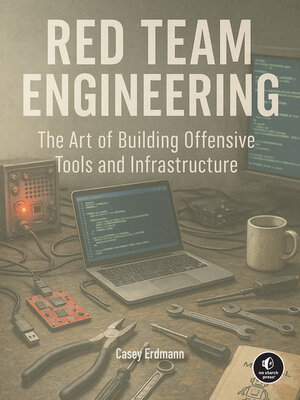Red Team Engineering
ebook ∣ The Art of Building Offensive Tools and Infrastructure
By Casey Erdmann

Sign up to save your library
With an OverDrive account, you can save your favorite libraries for at-a-glance information about availability. Find out more about OverDrive accounts.
Find this title in Libby, the library reading app by OverDrive.



Search for a digital library with this title
Title found at these libraries:
| Library Name | Distance |
|---|---|
| Loading... |
A comprehensive, hacker-written guide for security professionals looking to plan and implement real-world penetration testing, or “red team,” operations.
Based on the author’s popular online course, Offensive Security turns offensive security theory into practice, equipping security professionals with the hands-on knowledge they’ll need to carry out red team operations in the field.
Unlike other offensive security books, this title explains the “how” of red team operations, embracing the hacker spirit by teaching techniques and practices often kept under wraps in the industry. Erdmann also covers tooling and infrastructure, two key components of red team operations; comparable resources tend to focus on one or the other and lack specifics on implementation.
The book begins by covering how to write custom tools then teaches readers how to engineer the infrastructure to effectively use those tools. Projects and screenshots throughout help reinforce learning, and the conversational tone is approachable and engaging.
Erdmann emphasizes that readers can apply the skills they acquire here across numerous IT areas, as the technologies and procedures covered are applicable to defensive security or even neutral IT roles.
Based on the author’s popular online course, Offensive Security turns offensive security theory into practice, equipping security professionals with the hands-on knowledge they’ll need to carry out red team operations in the field.
Unlike other offensive security books, this title explains the “how” of red team operations, embracing the hacker spirit by teaching techniques and practices often kept under wraps in the industry. Erdmann also covers tooling and infrastructure, two key components of red team operations; comparable resources tend to focus on one or the other and lack specifics on implementation.
The book begins by covering how to write custom tools then teaches readers how to engineer the infrastructure to effectively use those tools. Projects and screenshots throughout help reinforce learning, and the conversational tone is approachable and engaging.
Erdmann emphasizes that readers can apply the skills they acquire here across numerous IT areas, as the technologies and procedures covered are applicable to defensive security or even neutral IT roles.







